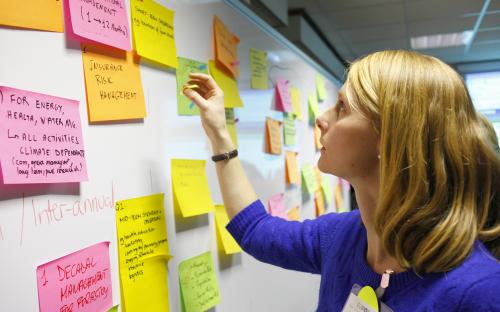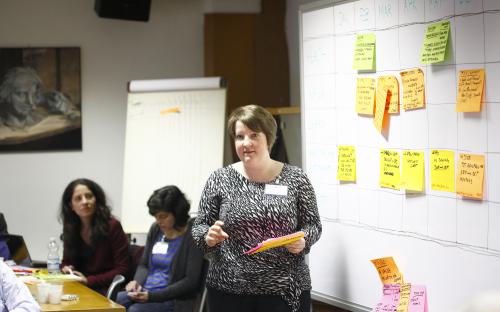First EUPORIAS stakeholder workshop
During the last week of January 2013 the first EUPORIAS stakeholders’ meeting took place at ENEA Headquarters in Rome. Forty-three people representing ten different sectors from across Europe registered for the workshop. The primary objective of the workshop, in line with EUPORIAS’ main aims, was to start a process for bridging the existing gap between producers and users of seasonal and decadal information. Questionnaires and interactive workshops were used as means to activate a dialogue with stakeholders.
The main findings of the workshop are summarised here.
Climate parameters:
-
While the list of relevant parameters tend to be sector specific (e.g. number of land-falling tropical cyclones for insurance, or number of marginal nights for the transport sector) in general, two parameters emerged as being the most relevant for the majority of stakeholders: temperature and precipitation. This appears to be particularly true for the water, energy, health, and agriculture sectors. While this is certainly an interesting finding, it may also suggest that stakeholders ask for what they know climate models can provide.
Users’ needs:
- Interaction and training.
While seasonal predictions are interesting and potentially useful and while many sectors use them, there is still a huge need for education and training. This was one of the priorities identified by the users. Direct access to experts, for instance via sector specific workshops or seminars, is seen as a vital way of providing this education and training. This was also reflected by the fact that some of the model development the users required could be addressed by technology already available.
- Decision making calendar.
With the exclusion of the agricultural sector which would benefit from seasonal predictions throughout the year, and the insurance sector for which the 1st of January and the 1st of April are crucial dates, the requirements of the other sectors tend to cluster in spring (for the summer outlook) and autumn (for the winter outlook).
- Decision relevant scale.
Contrary to the initial expectation, downscaling was not necessarily perceived as being the most important need for all sectors. A number of stakeholders would prioritise the improvement of the large scale drivers over the increase the resolution of model output.
- Bidirectional communication.
A significant language barrier exists between the different communities (users and producers of climate information) and even common concepts such as ‘confidence’ or ‘level of certainty’ appear to have different meaning.
- Consideration of additional climate variables of interest.
Some gaps indicated by stakeholders can be easily taken into account within the EUPORIAS project (e.g. tailored products and parameters at important stages of crop development, statistical











